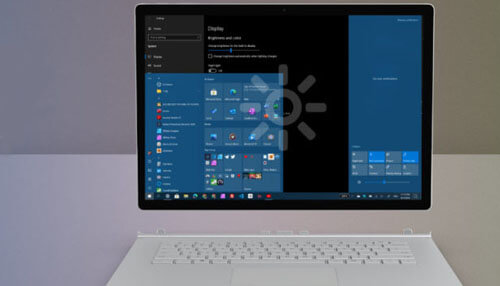Several non-office work settings, such as construction sites, industrial facilities, and laboratories, expose the eyes to materials and conditions that can cause eye injuries. However, people who work in an office environment should also consider the best ways to protect their eyes.
Staring at a bright digital screen for long periods can be harmful to your eyes. Companies should take extra measures to help their employees prevent dry eyes and digital eye strain as daily screen use increases both in and out of the workplace.
Continue reading to learn how you can promote eye health and maintain good vision—even if your workforce spends at least 40 hours a week in front of computers.
1. Remind Employees to Get Yearly Eye Exams
Regular eye exams are vital for maintaining excellent eye health at work. An optometrist will evaluate your eyes’ health, looking for early signs of conditions such as cataracts, glaucoma, macular degeneration, and refractive errors. A comprehensive eye exam can also help the optometrist detect and monitor major health disorders such as diabetes, cardiovascular disease, high blood pressure, and skin cancer.
In addition to these annual check-ups, urge your staff to schedule an appointment with an eye doctor if you notice them squinting at their screens or suffering headaches at work every day. Even if they say that their eyesight has always been great, vision changes with age, and they may require glasses to see better without straining their eyes.
2. Conduct Eye Health Seminars and Workshops
New hire onboarding and training should include eye care and safety. HR professionals can also consider adding wellness items and eye health tips to the employee welcome kit.
Hold eye health awareness seminars or other activities to educate employees on the importance of eye care. Collect employee feedback to discover how you can improve the employee experience and well-being with better vision benefits. Employees should also be familiar with first-aid procedures in the event of an eye injury.
3. Encourage a Healthy Lifestyle
Foster a healthier workplace by encouraging healthy habits. Include more vision-boosting food, fruits, and vegetables in the office cafeteria. Add nuts and seeds, whole grains like barley and quinoa, leafy greens like kale and spinach, and fish that are high in omega-3 fatty acids like salmon and mackerel.
Limit consumption of processed meats like bacon, ham, and hot dogs. Even deli meats loaded with sodium may cause hypertensive retinopathy—a type of retinal vascular disorder that may lead to blurred vision or blindness.
Also, encourage your employees to quit smoking. Aside from causing heart disease and lung cancer, smoking has been linked to vision loss or blindness. Smoking increases the risk of developing age-related macular degeneration, cataracts, glaucoma, diabetic retinopathy, and dry eye syndrome.
4. Look Away from the Computer
Remind your employees to take regular breaks to practice the 20-20-20 rule and other eye exercises. Set a timer to prompt employees to take a 20-second break from their screen every 20 minutes and look at something at least 20 feet away.
Managers can also include mini-breaks in the work schedule for employees to step away from their computers and stretch their legs for five minutes. These regular breaks are not only good for overall health but can also help improve job performance and increase productivity.
5. Blink Frequently
When you spend a lot of time in front of a computer, you may forget to blink, and your eyes can get tired. Because the blink rate decreases when staring at a screen, prolonged computer use can lead to dry eyes.
Aside from taking regular breaks, remind employees to make an effort to blink every four or five seconds. Frequent blinking can keep their eyes sufficiently lubricated and prevent them from becoming dry and irritated.
6. Adjust Screen Brightness
Working on a computer with improper settings can cause considerable eye strain. Adjust the brightness of your monitor to match that of your surrounding workplace. You can test this by opening a white background on your screen. If your monitor appears to be a source of light, then your screen is too bright. On the other hand, if your screen is too dark, it can cause your pupils to dilate, making it harder to focus on the screen.
7. Reduce Screen Glare
Screen glare and bright reflections add extra pressure to your vision, resulting in eye strain, headaches, and migraines. Use an anti-glare screen that has a layer of coating to reflect light and protect your eyes against the glare. You can also find anti-glare screens for mobile phones and tablets if you spend a lot of time checking emails on other mobile devices. Alternatively, consider wearing glasses with an anti-reflective coating to minimize glare.
8. Choose the Right Fonts and Size
The font size on your computer often affects how your eyes feel. The smaller the font, the greater the eye strain. So, adjust the font size, especially when reading long documents.
Different typefaces can also play tricks on your eyes. While Times New Roman is often a default font in many programs, it can hurt your eyes. The small lines or strokes at the end of each letter, called serifs, force you to look harder to recognize a word, and this can lead to eye fatigue. Fortunately, there are sans serif fonts like Arial and Calibri that have more space between each letter and are easier to read.
Conclusion
Given the importance of a healthy vision to employee productivity, performance, and well-being at work, organizations must take proactive steps to ensure eye health and safety. Employers and employees can work together to promote and maintain eye wellness by making simple changes to work habits and computer settings.




